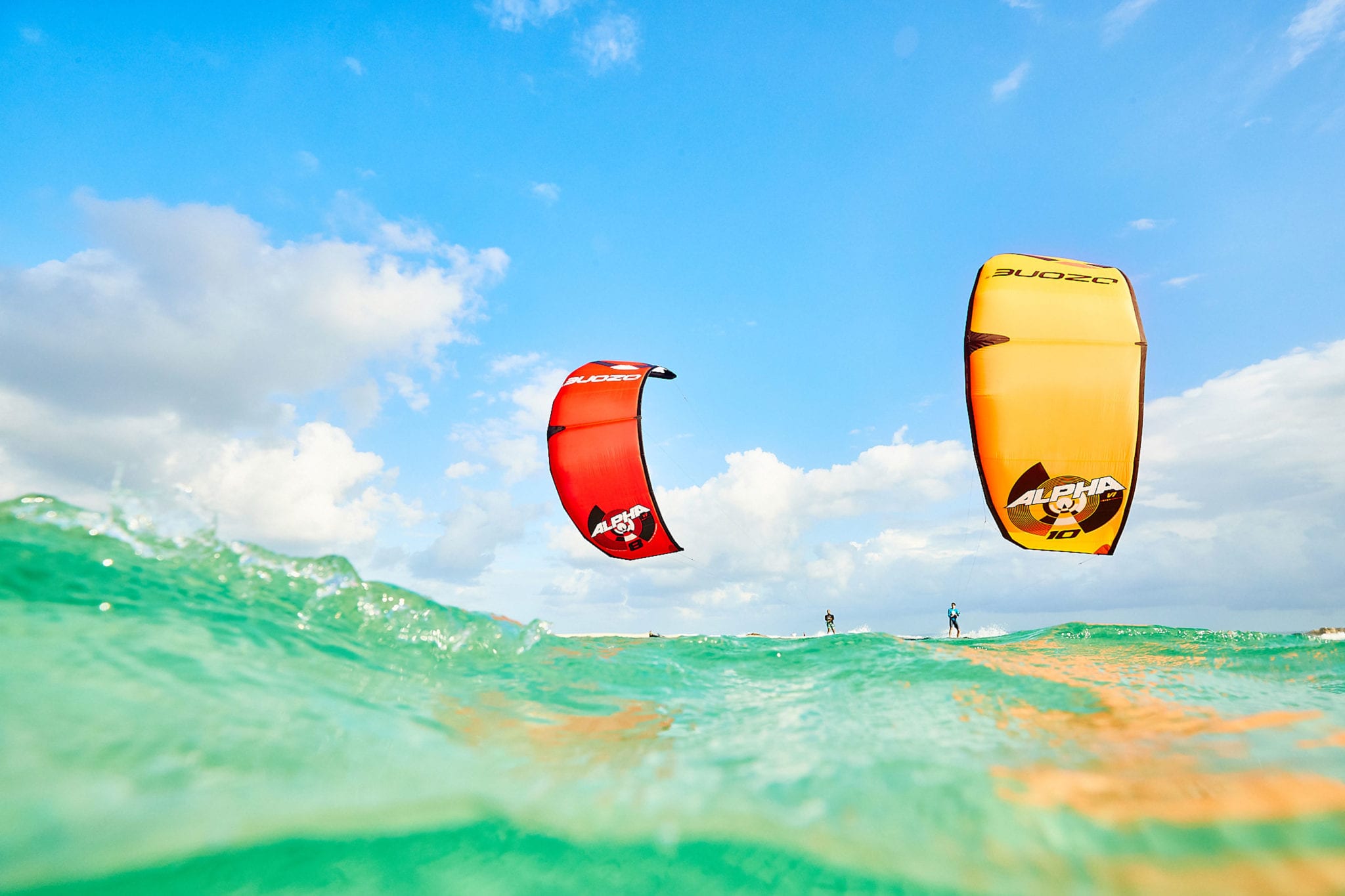
This is often one of the very first questions I get asked on the first day of a course, which is reassuring as it is a fundamental consideration when choosing what equipment to take and set up. If over looked, this can put both the rider and others in considerable danger. Kite sizes range from a tiny 3 meters to a huge 20 meters, and kitesurfers will be out riding in conditions from 6 knots to 50 knots, so there’s certainly plenty of sizes to choose from. How to choose the right sized kite revolves around the combination of 2 factors – the wind speed and the rider’s weight.
Table of Contents
The Kite Choice Equation
This is an equation The Kitesurf Centre instructors often use when choosing the right sized kite for their lesson. It takes the wind speed, weight and ability. See the full break down of each below. The important part is wind speed, as you’re likely to know your weight and ability fairly accurately, but wind speed is a guess at best if you don’t have the technology to accurate measure it. So always lean on the side of caution and go with a smaller kite if in doubt.
Rider Weight / Wind Speed x Ability = Kite size
| Rider Weight | Wind Speed | Ability | =Kite Size |
| 70kg | 20 knots | 1.8 (beginner) | 6.3m |
| 70kg | 20 knots | 2.1 (intermediate) | 7.35 |
| 70kg | 20 knots | 2.3 (independent rider) | 8m |
The equation can be used until you’re comfortable choosing the correct sized kite. It generally brings up a smaller kite than needed for the conditions, which is ideal for learning. Play around with the numbers and find something that works for you and your ability, then stick to it.
Wind Speed
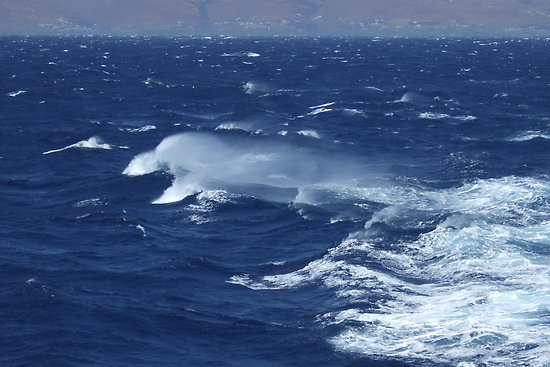
Before you arrive at your kite spot you should have an idea of what the wind forecast will be. Online sources such as Windguru and XC Weather will provide you with a good indication from within 2-3 days. What’s the basic rule with kite size and wind speed? I’m sure you guessed it. As the wind speed increases, the size of your kite decreases, this being the most effective way to moderate the kite’s power. This is the same in both windsurfing and sailing, where you put on a different size sail, or reduce the sail’s surface area, also known as reefing. Let’s assume an average riders weight of 80kg, and see how this stacks up in different wind speeds.
| Wind Speed (knots) | 8 – 15 | 15 -25 | 25 – 40 | 40 + |
| Kite Size (m²) | 15 – 12 | 12 – 9 | 9 – 6 | 6 – |
Kite Wind Range
As the wind speed goes up, the kite size comes down. You’ll also notice that different sized kites can be used in the same wind strength. That is because each kite has a wind range. For example, a 9 meter can be ridden in anything from 15 to 30 knots. This varies with each type of kite, influenced by the canopy profile and the bridle system. Bow kites have a good wind range, partly because the shape of the kite allows for a lot of de-power from the bar. C kites on the other hand, partly due to their narrow wing tips, have a much reduced de-power function, and therefore don’t have such high wind ranges.
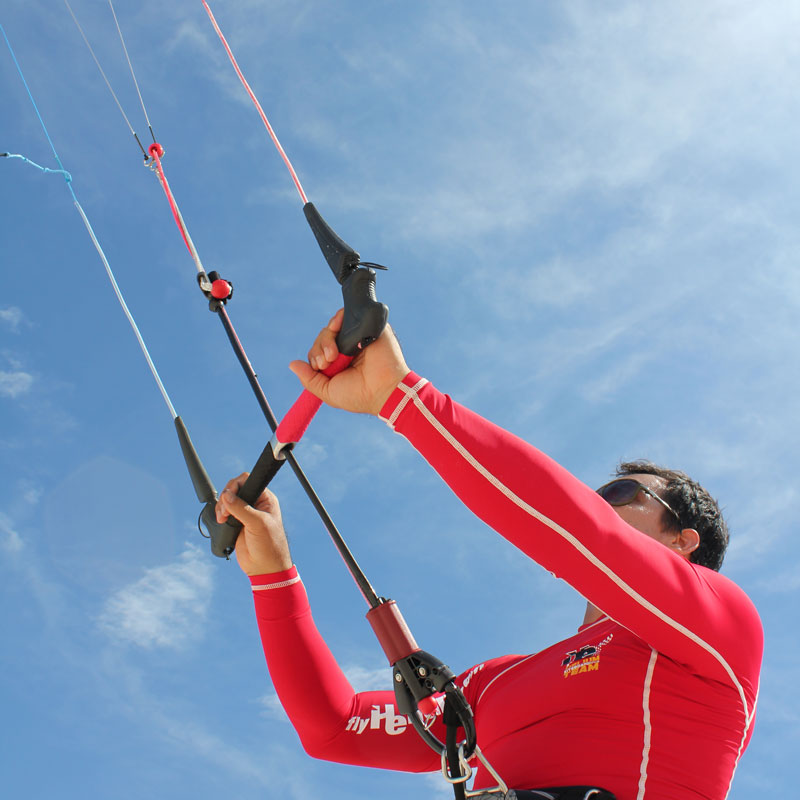
Rider’s Weight
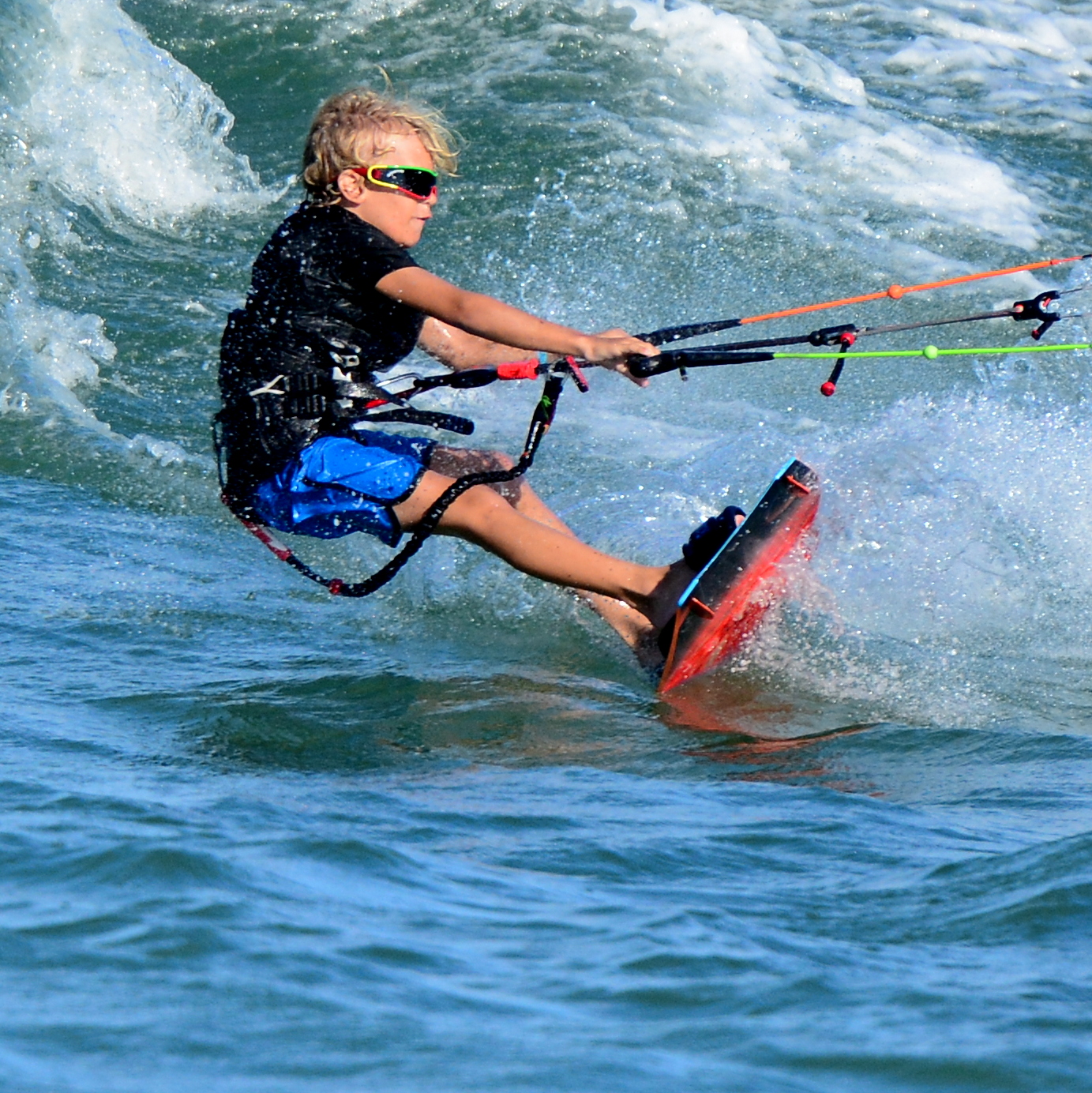
One of the great things about kitesurfing is that a student or rider’s weight bares little significance, though adjustments need to be made somewhere, and the kite is the obvious choice. A little like a car, the heavier it is, the more power is needed to get it going, though this consideration is not nearly as significant as to how wind speed affects the kite size, and is also a little murkier to define.
This is how I play it – take a look to see what is the most common sized kite being ridden, and take that as the average choice; the size of each kite is usually written on the wing tips. Assuming 80 kg is the average rider weight, you add or subtract 1 meter of kite size for every 10kg you are above or below that average weight. So if most riders are on 12’s, and you weigh 110kg (30kg more than 80kg, therefore +3 meters), you’d go out on a 15, or if your weight is 50kg (30kg less then 80kg, therefore -3 meters), you’d be better on a 9.
Like I said, not so easy to define, and actually you’ll be surprised at how quickly your kite size choice will become second nature to you, being more a familiar feeling rather than high maths. There are formulas and charts available online, though these are intended as guidance only.
So those are the two main considerations when choosing your kite size. What are the more subtle, though by no means subtle, variables?
Kite
As already mentioned, kite type does make a noticeable difference. I tend to ride on C kites, for no particular reason, and these generate power in a different way to bow or hybrid kites. C kites generate pull more from forward movement rather then catching the wind – again with the car analogy, more like an Italian sports car rather than a chugging American V8. So when most riders are out on 9 meters, I’m maybe out on a 12, or if they’re out on 6’s, I’m on my 9. The majority of riders fly hybrid kites, which is halfway house between a bow and C kite.
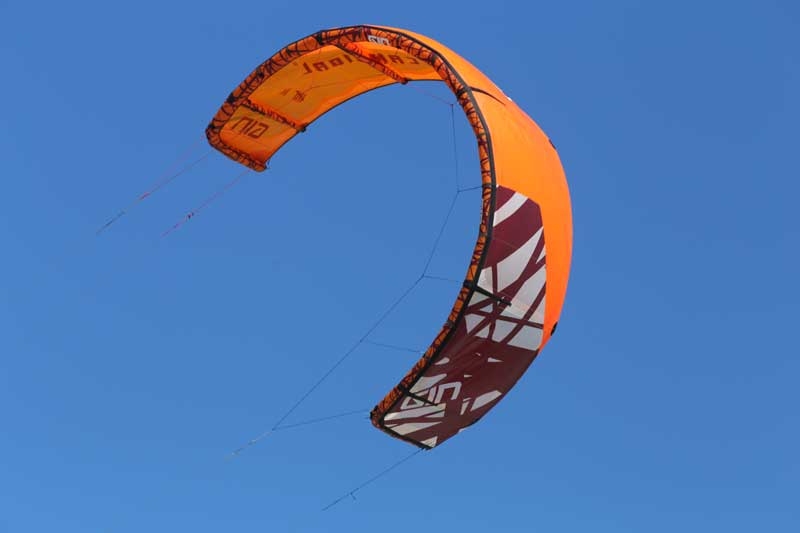
Board
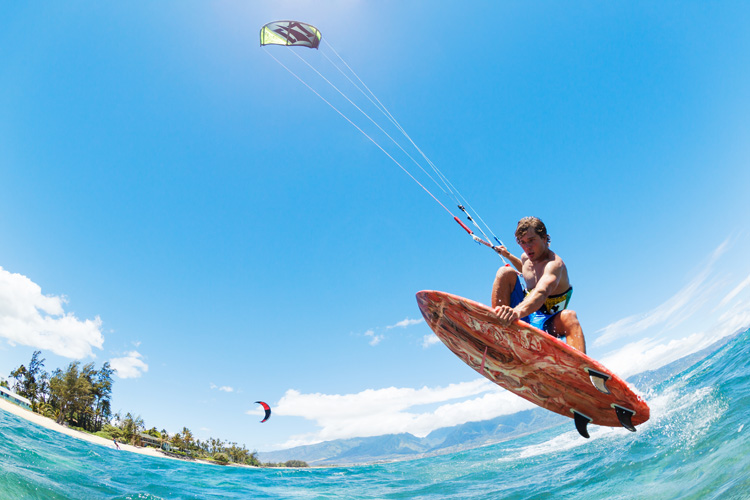
As with the kite, board type makes a difference to a rider’s kite size, and this relation between board and kite is often a measure of the board’s efficiency. The more efficient a board is, the less power required from the kite, and therefore the smaller a kite can be used. For example, often to assist students with getting up on the board, larger twin tips tend to be the choice, as these have a lower planing speed. As such, a smaller kite, can be used, which is the safer choice for those with little experience on a kite.
Another example is with wave riding. This is a style that is, as the name suggests, as close to surfing as a kitesurfer will get, and as they use surf boards, smaller kites can be used. This works well as smaller kites are more dynamic in flight and faster on the turn, which is ideal when ripping up and down waves.
Riding Style
As riders progress down the line, they tend to fit into a style of riding that they most enjoy. Some like to cruise whilst others like to catch big air. The current world record holder is Mike Mac Donald, setting a record of 33.9 meters. Pretty high! For those seeking such fame, going out slightly over powered, or ‘lit’, on large kites will maximise their jumping potential. This is referred to as boosting. In contrast, those who’d rather cruise comfortably will choose a kite size that is down the middle for the wind strength.
All this begs the question –
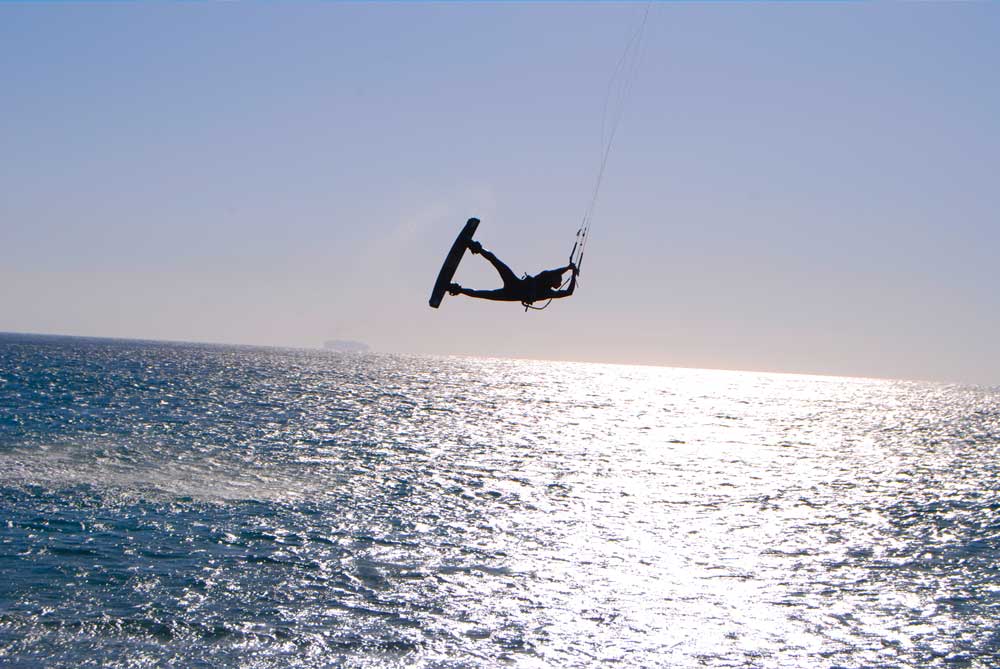
How Many Kites Do I need?
When you buy your first, we recommend a kite size that will suite the most common conditions that you’ll be progressing in, whilst taking into account your weight. This tends to be a size from 9 to 12 meters. As you develop, and start to explore wind speeds either size of this, you’ll need to invest in more kites, and the riding style you choose to pursue will define the type of kites these will be. Most riders find that 3 kites is enough to suit all conditions, some choosing even more to increase their wind range further.
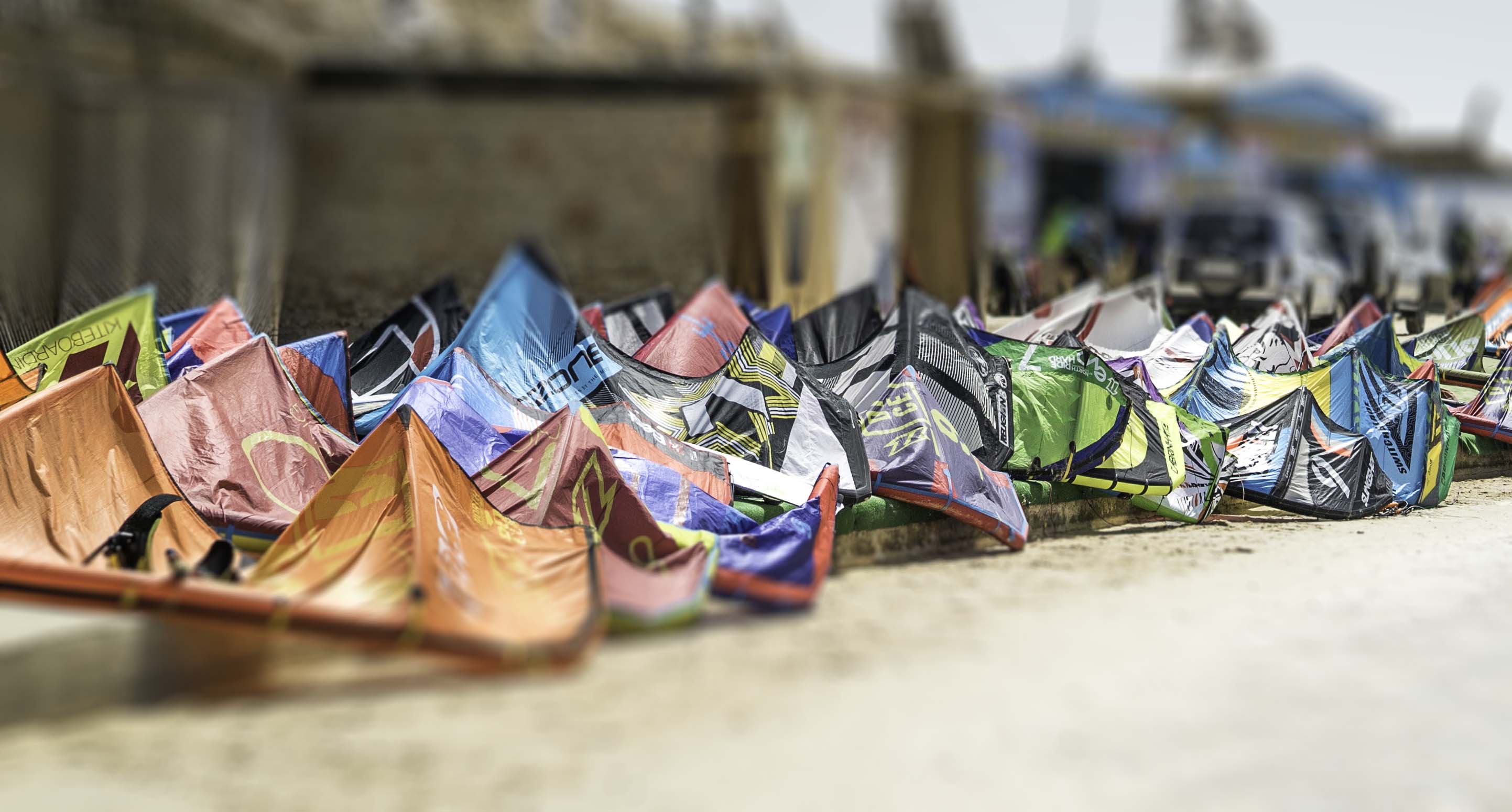
Some Final Words
How to choose the right sized kite is fundamentally about your safety, and as long as you follow these steps, you’ll be safe.
- Always turn up to your session knowing the forecast, and make sure you take a kite that is realistic for this wind speed. Make sure you’ve got plenty of time between tides, darkness, friends and family.
- Choose your kite size based on your own knowledge and understanding of your kite. Always take a look to see what size others are riding on.
- Setup your kite with time and patience. If it doesn’t look or feel right, it probably isn’t, so disassemble and start again.
- As with anything in kitesurfing, if you are unsure, ALWAYS ASK another experienced kitesurfer – there is no substitute for the experience and advice of others. We at The Kitesurf Centre are always around to give advice and guidance.
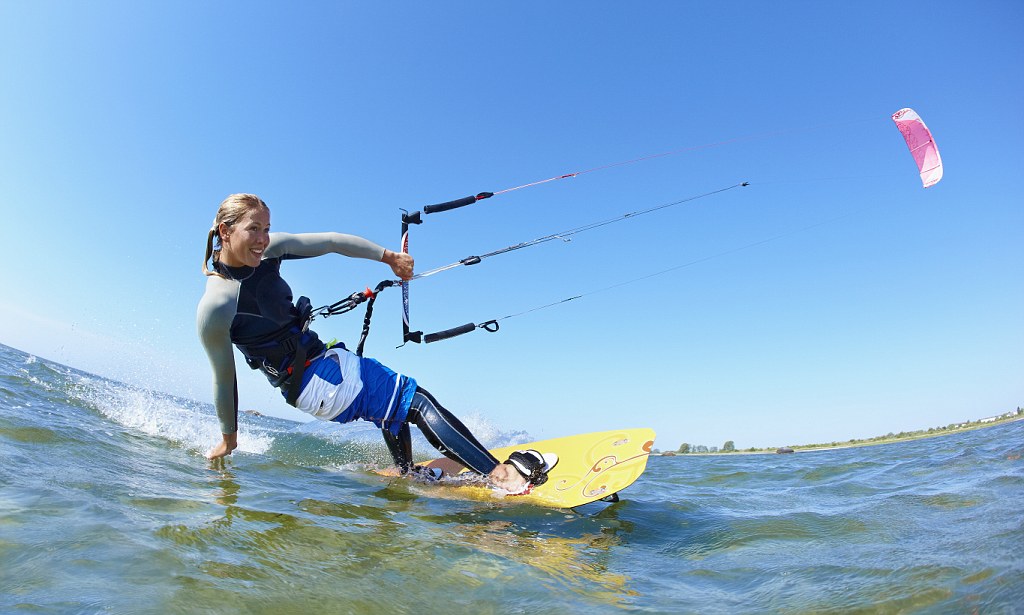
As I said, with a bit of time, this will become second nature to you. See you out on the waves!
NEXT UP – How to Self-Launch
